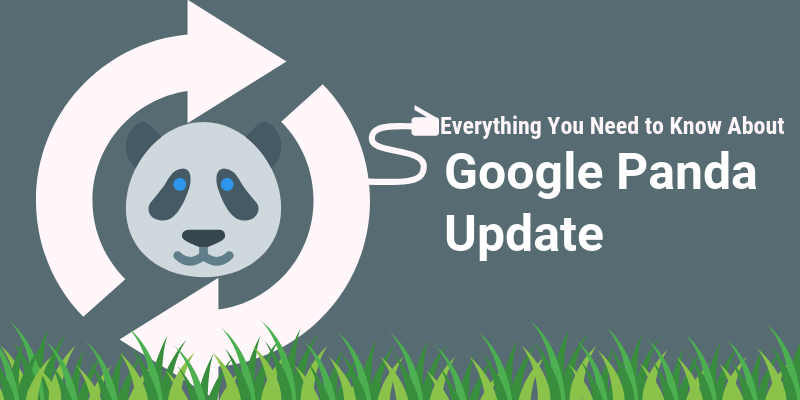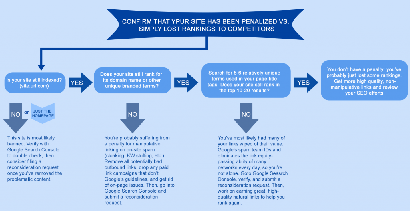I hope you enjoy reading this blog post.
If you want to get more traffic, Contact Us

Click Here - Free 30-Minute Strategy Session
Be quick! FREE spots are almost gone for this Month. Free Quote

When Google first came with its search engine, it was rudimentary and therefore easy for the webmasters to trick the algorithm. With time, Google came to know of ways and means that site owners deploy and started to up their game accordingly. And that’s how Google Panda came to being.
These updates to the search engine were mostly incremental and happened through minor patches.

Click Here – Free 30-Minute Strategy Session
Be quick! FREE spots are almost gone for this Month
Google engineers were also looking at the bigger picture and had planned massive changes to bring about blanket changes.
The first of such a sweeping change was rolled out on 23rd Feb 2011. It was called the Google Panda update.
The Google Panda Update was basically designed to improve the overall quality of the website content. At the time, the world wide web was full of sites that resorted to what’s known as black-hat SEO.
Websites could carry very low quality content and still beat genuine sites that had what the users were looking for.
Therefore, this update was specifically aimed at penalizing such low quality sites and reward sites that were informative and relevant to search engine users.
In effect, Google forced website owners to comply with its standards and make it mandatory to provide information that the users were seeking.
It is estimated that when the update first rolled out, it affected about 12% of English language searches worldwide.
Between 2011 and 2015, a further 28 updates were incorporated to the original algorithm.
Although, initially Google Panda Update was implemented as a separate filter, it was incorporated into the core algorithm in 2013.
One of the biggest challenges that Google faced during the early days of the search engine was websites that had very thin content. Users were never able to get all the information they wanted from a single online source.
Duplicate content on a web page is the copied content that appears somewhere on the world wide web more than once. Sometimes, website owners place similar content with very little or no variation within the same site.
For example, if you are an electrician who serves three closely located towns, you may have same services pages for different locations. The content maybe exactly same but only differs in terms of the location served.
Another possible situation for duplicate content is with ecommerce sites.
Even though you have intended to create unique content for each page, there are many click paths to reach the same page and therefore a different URL is generated.
Search engines consider content on such different URLs as duplicate content.
Users often find content to be shallow and Google Panda Update is quick to pounce on sites with such content.
If you are not the definitive authority in your field or you have not been verified as a credible source of information based on Google’s verifying processes, then content published by your site is said to lack in authority. Always aim to be the thought leader in your niche.
The visitors to your site should be comfortable enough to share their credit card information.
Websites that have numerous pages that have low-quality content aggregated from other websites are considered as content farms.
These are pages are usually created with the primary purpose of ranking for search terms by referring to trending topics. Such content do not provide any value for the visitors as they are merely reworded with no unique content.
While the benefits of user-generated content cannot be discounted, you should keep in mind that a lot of such content can backfire if not executed properly.
When Google Panda Update was rolled out, it aggressively went after sites that carried such content and penalized them for misleading the users.
The fundamental reason whey search engines like Google exist is to provide their users with content that’s informative and valuable.
Therefore, the paid ads on a website will be considered as detrimental towards this objective.

By attracting search engine users to their website with black-hat techniques, websites were promoting businesses that were no way related to the original search query presented by the user.
This is a strict a no-no with the Panda Update.
When your page appears on the search engine results page, users will find a summary of what they can find on your site through meta title and description.
Panda Update is programmed to find sites that have misleading meta data and penalize them.
If a website is blocked by other users on Chrome extensions or directly on the search result, it’s a straight red flag for the Panda Algorithm.
You can drastically lose incoming traffic, page rank and other performance indicators at any point in time for many reasons.
However, if you have lost any SEO value on any of your web pages, one sure way of knowing if your loss is due to Google Panda Update is to check whether Google rolled out any update around the same day.

There are many reasons for which you can lose page equity including a better performance by your competitors.
You will have to consider a host of factors before zeroing in on Panda Update as the reason.
Also, there will be times when Google can penalize you individually. If this is the case, you will be notified of the same in your Google Search Console.
So consider all the factors that might have resulted in the drop of the page equity before you can conclude for that you have been hit by the Panda Update.
Here’s a quick flow chart to help you decide in a quick and smart way.

Although Panda Update has the reputation of creating loss in SEO values that’s difficult to recover, the factors that this update considers are fairly straight forward.
So this gives you a clear picture of where to start and what to work on.
From the factors mentioned early in this article, it is clear that Google Panda Update only targets the quality of your content and no other factor that influences your page rank.
Therefore, your obvious choices to recover from Google Panda Update should be:
So it’s pretty straight forward and clear that the Google Panda Update only targets low-quality content.
There’s no short cut to the whole process of creating content that’s useful for your readers.
However, there’s one mantra that every modern SEO specialist swears by and that is “Create content for the readers and not for search engines.”
As long as you put your readers in focus and let everything else revolve around them, you should be able to create content that will be eventually appreciated by the search engine algorithms.
Got a question or a comment that can radically change the way one can deal with Panda Update? Don’t hesitate to share it in the comments section.
I’d love to hear them and will try and add some value to it. Cheers!

LEAVE A REPLY